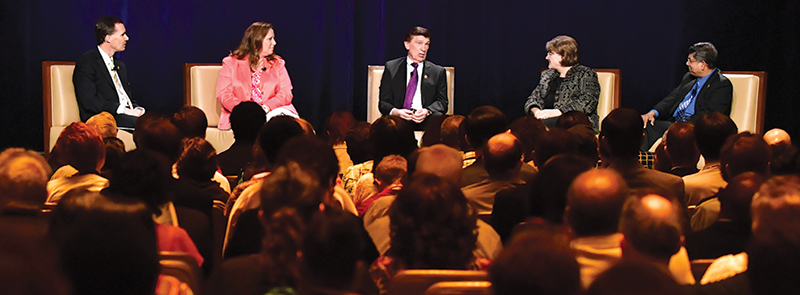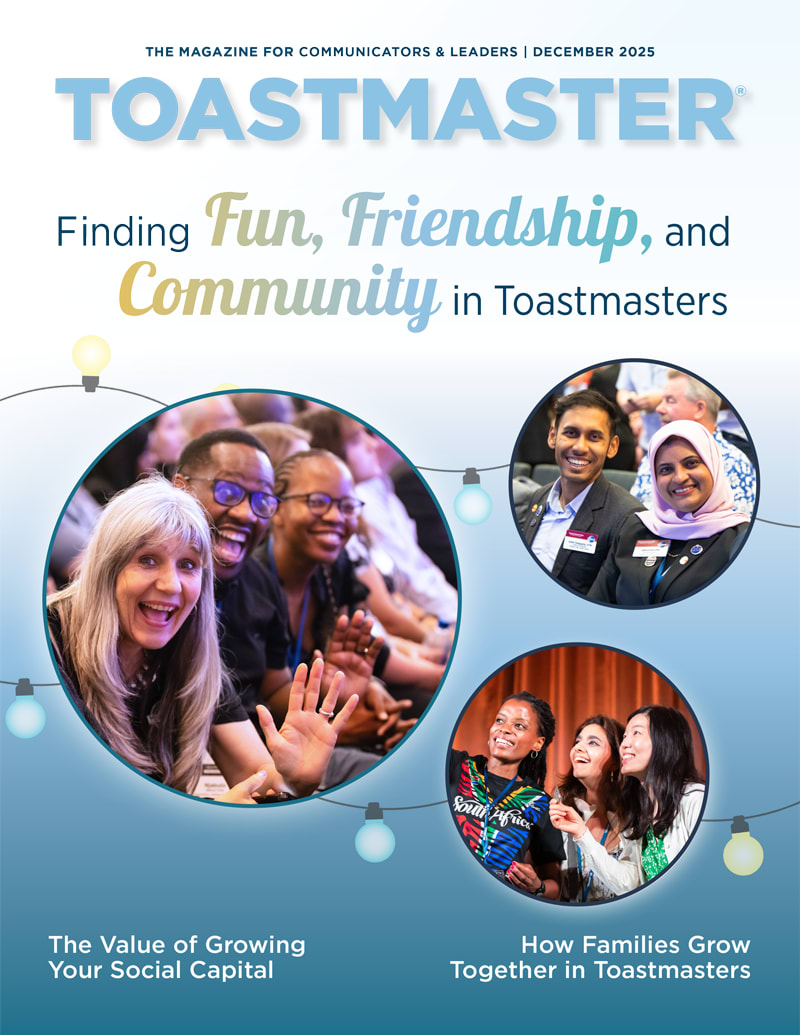
You’ve been asked to moderate a panel at a conference and you think you’ve got it covered. You’ve researched the topic, connected with the panelists and compiled your questions. You’re ready to go! Or are you?
Stick with the traditional format and you’re likely to bore your audience. Instead, try these 10 tips to add more pizzazz to your panel discussions.
Set the stage.
You can tell that a panel is going to be duller than dirt when you walk into the room and there’s a long draped table at the front and a lectern to the side. Yawn! Create a warmer, more intimate setting with comfortable chairs set in a shallow semicircle and a small table in front or to the side. Have a welcome sign at the door and post intriguing pictures, phrases and quotations on the walls. Play upbeat, popular, age-appropriate music. Show a continuously looping slideshow with panelist bios and interesting tidbits of information about the topic.
Engage beforehand.
Why wait for the panel to start? Ask those registered for the event to submit questions and comments about the discussion topic through social media channels, a blog or a web-based survey. Then weave the comments and questions—as well as the names of the people submitting them, if appropriate—into the panel discussion.
Get them mingling.
Rather than have the panelists huddle at the front, encourage them to mingle with the audience. Suggest that they ask audience members easy questions such as, “What brings you here today?” or “What’s your biggest challenge relating to this topic?” You, as a moderator, can ask the audience questions too. You’re establishing rapport with the audience and gathering valuable information you can incorporate into the discussion.
Start strong!
Grab the attention of the audience with a video, poll, relevant fact, statistic, quotation or anecdote. After you review the agenda with the audience to give them an idea of how the program will unfold, keep the momentum going with an “opening salvo,” where you give each panelist an opportunity to launch an idea, position or challenge. The purpose is to frame the ensuing discussion, not deliver answers. Here are some ideas for those opening salvos:
- Be provocative. Ask the panelists a challenging question related to the topic.
- Point/Counterpoint. Ask one panelist, “What’s your main point on this topic?” Then ask for a counterpoint—an alternative view. Depending on the topic, you can have several different points of view. Diverse viewpoints make things more interesting.
- Show and tell. Use a prop to help an audience visualize, understand, accept and remember an idea, concept or theme.
Vary the format.
Shake things up with an entertaining format. Take a cue from television talk shows. American talk-show host Phil Donahue used to walk through the audience and reflect the questions and conversation back to the guests (panelists) on the stage.
Or you can tone it down to a chatty, conversational style, like the popular U.S. talk show The View. The possibilities are endless!
Poll the audience.
At the beginning of the discussion, gauge the room with a quick survey or quiz using a show of hands or any type of audience response system. Presentation coach Karen Hough, the founder and CEO of ImprovEdge in Ohio, is a big fan of audience involvement. In an article in The Huffington Post, she writes about how she likes to “leverage a yes or no topic by asking the audience: ‘Let’s pause and see what our audience thinks of that.’ … That involves the audience and gives you fodder to comment on the panelist’s story. ‘Wow, John, less than half of our audience would have taken action as you did. Tell us how you summoned the courage to do so.’”
Nudge your neighbor.
Periodically, ask audience members to talk with the person sitting to their left or right about the discussion topic. Frame the question so there will be differing opinions. For example, you can ask, “What are the misconceptions around this topic?” or “Is this a fact or fiction?” Or you can ask about the discussion points that are most applicable to audience members and how they will apply the information they’ve learned. Debrief these micro discussions with the larger group by taking two or three comments as well as one or two questions from the panel at the beginning of the discussion, periodically during the event or to start off a question and answer session.
Crowdsource the Q&A.
Scott Kirsner, who writes about technology for the Boston Globe newspaper and moderates technology-related discussions, posted the “13 Guidelines for Great Panel Discussions” on his website. He writes, “I can’t emphasize enough how important a Q&A period is; without one (or with an abbreviated one), it sends the message that the audience is there to be passive listeners rather than active participants.”
Let the audience drive the questions by using tools such as these:
- Question cards. Pass out index cards to the audience. At specific times during the discussion, collect and sort through the cards, selecting those that encapsulate key themes or pose intriguing questions. Or have an audience member or panelist randomly select a card.
- Smartphones. Invite the audience to text or tweet with the appropriate hashtag or phone number. Check the feed periodically and comment as appropriate. You can also use a meeting app such as www.slido.com that lets the audience create and “like” the questions so their favorites float to the top of the list.
- Small groups. Have audience members break into groups of two or three and discuss what questions they would like to ask. Pick random groups and have them ask their best question.
Create a tweetable sound bite.
The late Garry Marshall, a famed Hollywood movie director (Pretty Woman, The Princess Diaries), once said, “Film directors know that if people walk out of your movie repeating a phrase they heard, that movie will make money. It means audience members are taking the movie home with them.” What will your audience find themselves repeating from the panel discussion? Encourage your panelists to share their key points in “headline” form: a phrase of no more than five words that encapsulates the idea and is memorable long after the panel discussion is over.
Create an exclusive moment.
Audiences are looking for that moment where the curtain is pulled back on the topic. They are hoping the panelists will share their wisdom and insights—that there will be an element of surprise, a sharing of diverse viewpoints and provocative thinking. That the discussion will be spontaneous and unscripted, offering a glimpse behind the scenes and access to insider information. Audiences want an exclusive, a story you can’t find on Google, YouTube or TED.com.
As a panel moderator, what are you doing to create that special moment? It all comes down to the choices you make. You can stay with the same old ho-hum traditional format or you can choose to add a little pizzazz to your panel discussion. When you spice it up, you will look like a hero, and the audience will rate your event as “one of the best!”
Kristin Arnold is a professional meeting facilitator who challenges leaders and their teams to achieve extraordinary results—especially when the stakes are high. Find out more at extraordinaryteam.com.



 Previous
Previous
 Previous Article
Previous Article